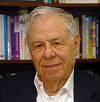While many of my neighbors believe this area remains the "forgotten" part of Alaska, expanding large scale, corporate tourism will profoundly affect everyone who lives out here. Not only because it will bring more tourists driving down our roads and shopping at the Merc, this area is connected to the United Nation's proposed Wildlands Corridor.
The Wrangell St. Elias National Park and Preserve is a designated World Heritage Site.
http://www.nps.gov/history/worldheritage/alaska.htm
This means humans activity comes under the jurisdiction of international land management treaties that supercede U.S. Constitutional Law.
The Wildlands Corridor will connect wildlife trails from the mainland U.S. to Alaska. Already the Cascadia Wildlands Project in Alaska is actively trying to protect the entire Copper River Delta from future human use.
http://www.grizzlybear.org/corridor2.htm
http://www.cascwild.org/alaska/
http://www.cascwild.org/alaska/Copper_River_Delta/index.html
The Copper River Branding and Marketing Plan of 2006 dubbed the Copper River Roads as "Adventure Corridors." This is a significant document that should be studied closely by anyone who has a stake in the Copper River Basin. The Wildlands Studies Program at Santa Barbara, Ca hosted a summer project in the Wrangell Mtns this past summer. From their website:
"Alaska’s parks are uniquely mandated to allow continued traditional use by their local rural residents. This summer, team members will discover the passionate connections people have to the Wrangells, both as a home and a park. We will examine the dilemmas a gateway
community encounters as it works to sustain an Alaskan bush lifestyle in the face of an
increasing pace of change brought about by tourism and other human activity.
"Through writing and discussion, team members will reflect on relationships between culture and landscape, and on how those relationships influence land use and management. Our work can suggest creative possibilities for the future of the Wrangells and help us understand why Alaska’s wilderness affects us so profoundly." (http://www.unex.ucsb.edu/wildlands/alaska/)
"We've learned over the past 40 years that while our National Wilderness System is a
spectacular collection of majestic peaks and wild, rugged terrain, it is not large enough to
provide adequate habitat for many wide-ranging species and does not capture the full
diversity of habitats. Disjunct islands of wilderness or other protected lands often cannot
support sustainable populations of native plants and wildlife, and are inadequate at
protected biodiversity. Therefore, in addition to expanding and adding new wilderness
areas, we need to identify and protect linkages and compatible use areas as part of a
connected network of protected areas in the Pacific Northwest.
"As part of our work to establish a network of wildlands across North America, the Wildlands Project is launching a program to reconnect wildlands along the Pacific "mega linkage" from Baja, up through California, Oregon, Washington and into British Columbia, Yukon and Alaska. This will take continental conservation down to the regional level-step by step with our partners from the region. Together we will build a positive blueprint for all conservation work, a context for wildlife and wildlands defense.
"Even our largest wilderness areas are too small to provide adequate wildlife habitat. Activities outside wilderness areas can threaten the ecological integrity of the wilderness as well as some of its wilderness values. Thus, it is necessary to look beyond the wilderness boundary, at the whole landscape, in order to protect the viability of some wildlife species and the wilderness values within a particular wilderness. Regional reserve design helps to address these threats to wilderness, by identifying additional areas in need of protection, linkages between wilderness areas, and compatible use areas (or "buffers") in the matrix of managed lands surrounding wilderness areas." (Leanne Klyza Linck, Executive Director, Wildlands Project Abstract for session: "Connecting Wilderness & Biodiversity"
http://www.speakeasy.org/~nwwpc/speakers.html













No comments:
Post a Comment